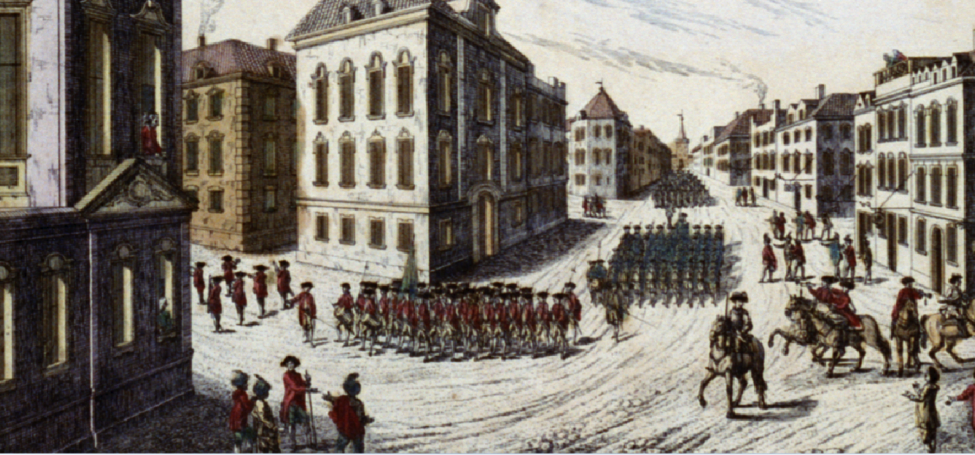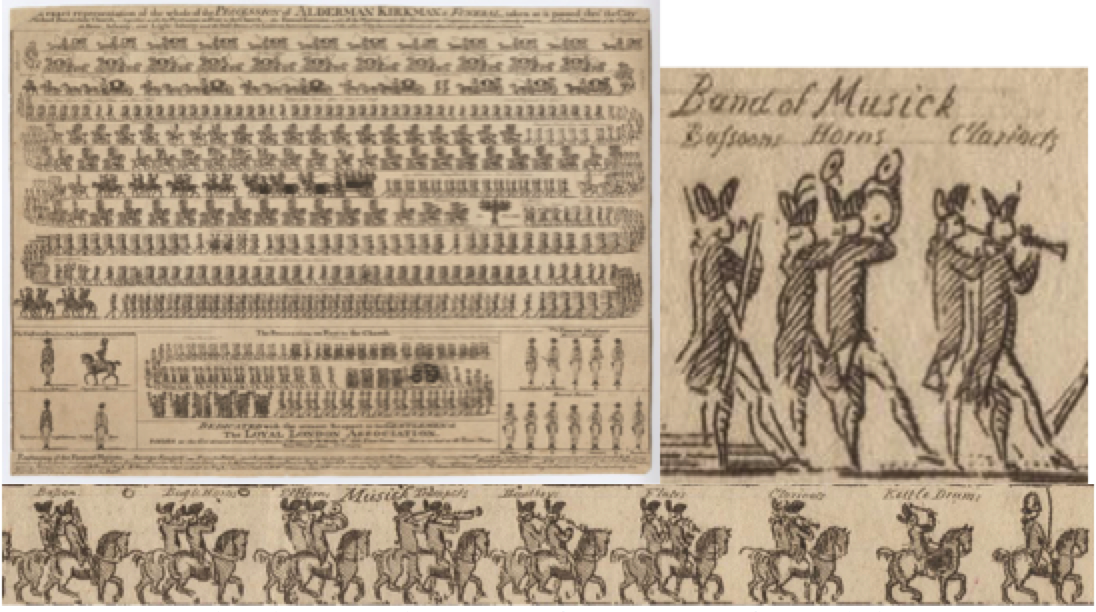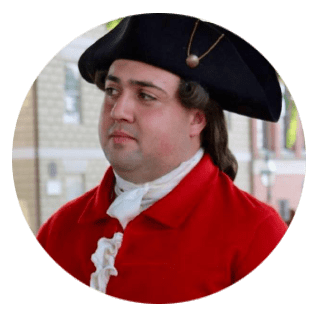Bands of Music in the British Army 1762-1790 Part 2
In the last post, we discussed what a band of music was and who made up their ranks. This time, we'll tackle what a band of music played and the types of duties they performed.
In part one, we learned about William Simpson, a member of the band of the 29th Regiment that deserted. Despite his absence, the band provided concerts for the public while stationed in New York and Philadelphia. In an ad in the New York Gazette, Fife Major John McLean advertised a concert for his own benefit that would not only feature the band but the drums and fifes of the regiment performing as well. [8]
The ad for his concert in Philadelphia provides more detail on what a concert from a band may have looked like.
The Concert will consist of two Acts, commencing and ending with favourite Overtures, performed by a full band of Music, with trumpets, kettledrums, and every instrument that can be introduced with propriety. The performance will be interspersed with the most pleasing and select pieces, composed by approved authors. A solo will be played on German Flute by John McLean; and the whole will conclude with an Overture composed (for the occasion) by Philip Roth, Master of the Band of Music belonging to his Majesty's Royal Regiment of North British Fusiliers. . . .after the Concert there should be a Ball; and, on this account, the music begins early. As soon as the second Act is finished, the usual arrangement will be made for dancing. [9]

In April of 1775, the Band of the 64th Regiment held a concert in Boston. A large undertaking, it combined solos, symphonic, and vocal pieces. The set list consisted of the following:
ACT 1st.
Overture Stamitz 1st.Concert German Flute,Song 'My Dear Mistress,' &cHarpsic. Concerto by Mr. SelbySimphony Artaxerexes,
ACT 2d.
Overture Stamitz 4th.Hunting Song.Solo, German Flute.Song, Oh! My Delia, &c.Solo Violin.
To conclude with a grand Military Simphony accompanied by Kettle Drums, &c. compos'd by Mr. Morgan.[10]
What is interesting to note is the absence of military music except for the final piece. Though military in nature, bands did not play only military songs. Instead, they drew from the music around them. Pieces by Stamitz, a notable German composer, and the symphony from Thomas Arne's 1729 opera Artaxerexes show that bands of music played popular music as well as songs of martial origin.
In addition to public concerts, bands also performed at military functions like funerals and ceremonies. On July 2nd, 1781, the Battalion of Loyal Volunteers of the city of New York paraded on Broadway at five in the morning. When they arrived at the house of their Lieutenant Colonel, they presented their arms, the band of music played God Save the King, and the regiment received their colours.[11]

John Rowe, a citizen in Boston, wrote on March 22nd, 1773 that he attended a funeral for his friend Captain Hay of the sloop HMS Tamar. Besides the officers and Marines, the Band of the 64th Regiment was present. Rowe remarked that "The Corps was preceded with Solemn Musick to the Chapel." On December 17th, 1774, Rowe attended a similar service for Captain Gabriel Maturin, secretary for General Gage, where the band of the 4th Regiment played.[12]
We've established the basis of bands of music, what they played, and where they played. In the next and final instalment of this series, we'll be looking at what the musicians wore.

Footnotes:[8] The New-York Gazette; and the Weekly Mercury, January 14, 1771, Page 3[9] The Pennsylvania Packet, 25 November 1771, Page 1[10] Boston Gazette, 11 April 1774. Courtesy of Don Hagist[11] New-York Gazette; and The Weekly Mercury, July 9, 1781[12] John Rowe, Anne Rowe Cunningham, and Edward Lillie Pierce, Letters and Diary of John Rowe: Boston Merchant, 1759-1762, 1764-1779, Boston, MA: W.B. Clarke Co., 1903, Pages 240-241, 288, Accessed September 3, 2017. https://archive.org/details/lettersdiaryofjo00roweRead Part 1 Here
 JOSHUA MASONJoshua is an undergraduate student at Rhode Island College majoring in Secondary Education and History. He’s been researching fifers, drummers, and bands of music during the eighteenth century for the past 5 years.
JOSHUA MASONJoshua is an undergraduate student at Rhode Island College majoring in Secondary Education and History. He’s been researching fifers, drummers, and bands of music during the eighteenth century for the past 5 years.

